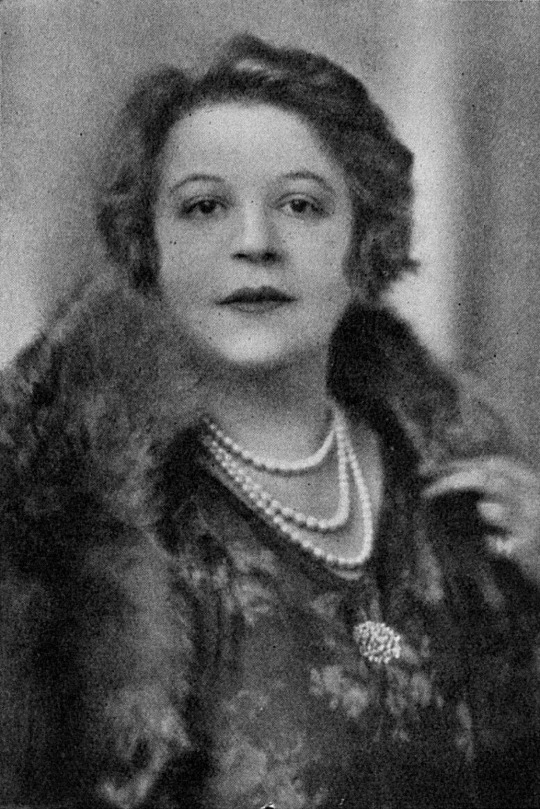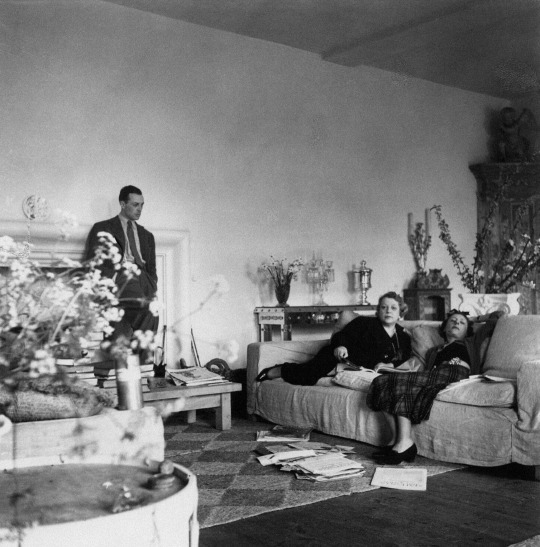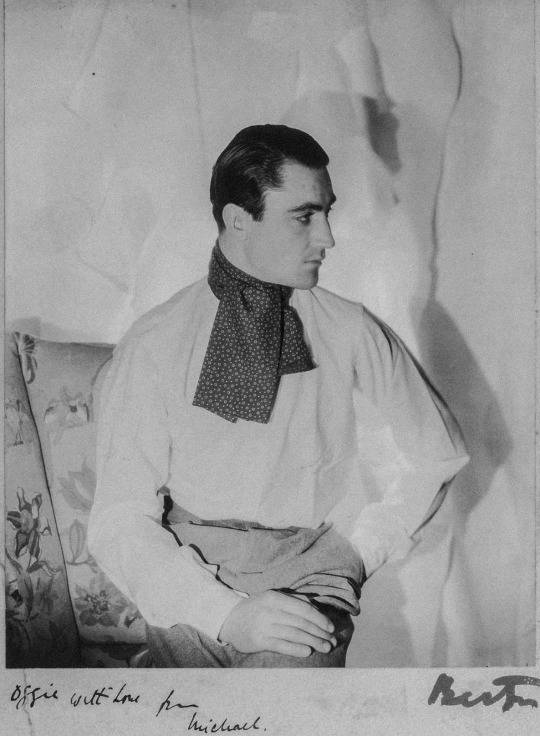#napier alington
Explore tagged Tumblr posts
Text






Olga “Oggie” Lynn (1882-1961), born Lowenthal, was a singer and singing teacher, who, despite being somewhat older than most of the Bright Young Things, was a staple of their circle. She was “short,” “dumpy,” and “jolly,” and would often host tableuax vivants for charity or sing at parties with “a rather sweet, pure little voice” when she wasn't giving lessons. She “was inclined to get into situations with which she could not cope and was always being helped by her friends,” chief among them Oliver Messel.
For a time, she lived together with Gladys Cooper, Lady Idina Sackville, and Tallulah Bankhead. According to Chips Channon, she and Tallulah Bankhead were “the queens of London's wickedest world — la haute lesbie [coterie of smart lesbians].” Her girlfriend, Maud “the Admiral” Nelson (1904-1969), though “unable to type,” was secretary first to Napier, Lord Alington, and then Cecil Beaton. It is undoubtedly Maud Nelson to whom Anthony Powell refers when he describes the mixed make-up of the parties of the age:
At one end of the scale there'd be quite smart people, Diana Cooperish sort of figures and so on. At the other there'd always be a lot of these girls who were sort of living on the margin — you know, they'd do a little modeling; at the same time they were not quite tarts but they were being half kept. And then it would tail off into the queer, almost criminal world — lesbians dressed as admirals, that sort of thing. (emphasis mine, qtd. in Taylor, Bright Young People)
As a Christmas present, in 1933, Baba and Cecil Beaton gifted Olga Lynn a scrapbook filled with signed photographs of their friends, giving us a glimpse of her social circle. It included Lady Idina Sackville; Violet, Duchess of Rutland; Gertrude Lawrence; Lady Diana Cooper; Napier, Lord Alington; Sir Michael Duff; Audrey Pleydell-Bouverie; and Viola Tree.



#olga lynn#bright young people#bright young things#ok get ready for my extensive tagging. here we go →#1920s#1930s#oliver messel#gladys cooper#idina sackville#tallulah bankhead#chips channon#maud nelson#napier alington#anthony powell#diana cooper#baba beaton#violet rutland#gertrude lawrence#michael duff#audrey pleydell-bouverie#viola tree#peter watson#lilia ralli#baba d'erlanger#charles james#tom mitford#info abt the photos & sources in alt!#🕰️
39 notes
·
View notes
Text

oh :(
2 notes
·
View notes